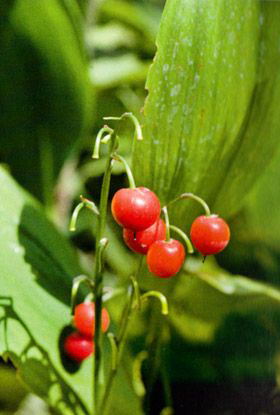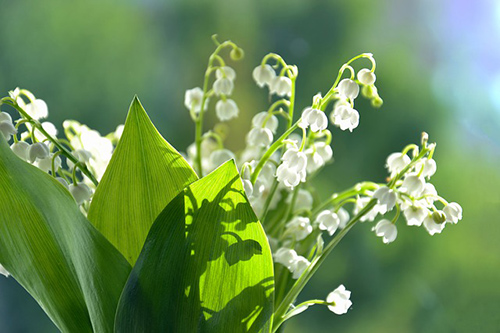Contents
The leaves and flower clusters of the lily of the valley plant are used in the pharmaceutical industry to produce heart-stimulating medicines. However, they may also be used naturally, so always take the cautions indicated here.
- LILY OF THE VALLEY HERB C/S WC

Lily of The Valley Plant Scientific Facts
- Other names: May lily, May bells.
- French: Muguet.
- Spanish: Convalaria, Iirio de los valles.
- Environment: Forests all over Europe; the plant has been naturalized in America.
- Description: This vigorous plant of the Liliaceae family grows from 10 to 30 cm high. It has two large, elongated, elliptical leaves and a cluster of white, aromatic flowers. The fruit is a red berry.
- Parts of the plant used medicinally: Leaves and flower clusters.
Healing Properties and Warning

The whole plant contains cardiotonic glycosides similar to the foxglove plant and saponins. Unlike these, the glycosides of the lily of the valley plant do not accumulate in the body, which is an advantage, but they are tolerated less (producing vomiting).
Besides its heart-invigorating properties, it also has antispasmodic and diuretic properties. It is employed, always under medical supervision, for cardiac insufficiency, hypotension, blackout, palpitations, hyperuricemia (excess of uric acid), and urine lithiasis (kidney stones).

WARNING! Never eat the toxic berries, nor exceed the indicated doses. Intoxication shows itself through vomiting and violent diarrhea.
How to use Lily of the Valley
- Infusion: The usual dose is three to five grams of leaves and/or flower clusters per cup of water, which should be consumed once or twice daily.
DISCLAIMER: All content on this website is presented solely for educational and informational objectives. Do not rely on the information provided as a replacement for advice, diagnosis, or treatment from a qualified medical expert. If you are pregnant, nursing, or have any preexisting medical concerns, talk to your doctor before using any herbal or natural medicines.
REFERENCES
- George D. Pamplona-Roger, M.D. “Encyclopedia of Medicinal Plants.” George D. Pamplona-Roger, M.D. Encyclopedia of Medicinal Plants. Ed. Francesc X. Gelabert. Vols. 1 San Fernando de Henares: Editorial Safeliz, 2000. 218. Print.
- National Capital Poison Center: https://www.poison.org/
- MedLine Plus – Lily of the Valley: https://medlineplus.gov/ency/article/002886.htm
- WebMD – Lily of the Valley: https://www.webmd.com/vitamins/ai/ingredientmono-289/lily-of-the-valley
Last update on 2025-06-05 / Affiliate links / Images from Amazon Product Advertising API

